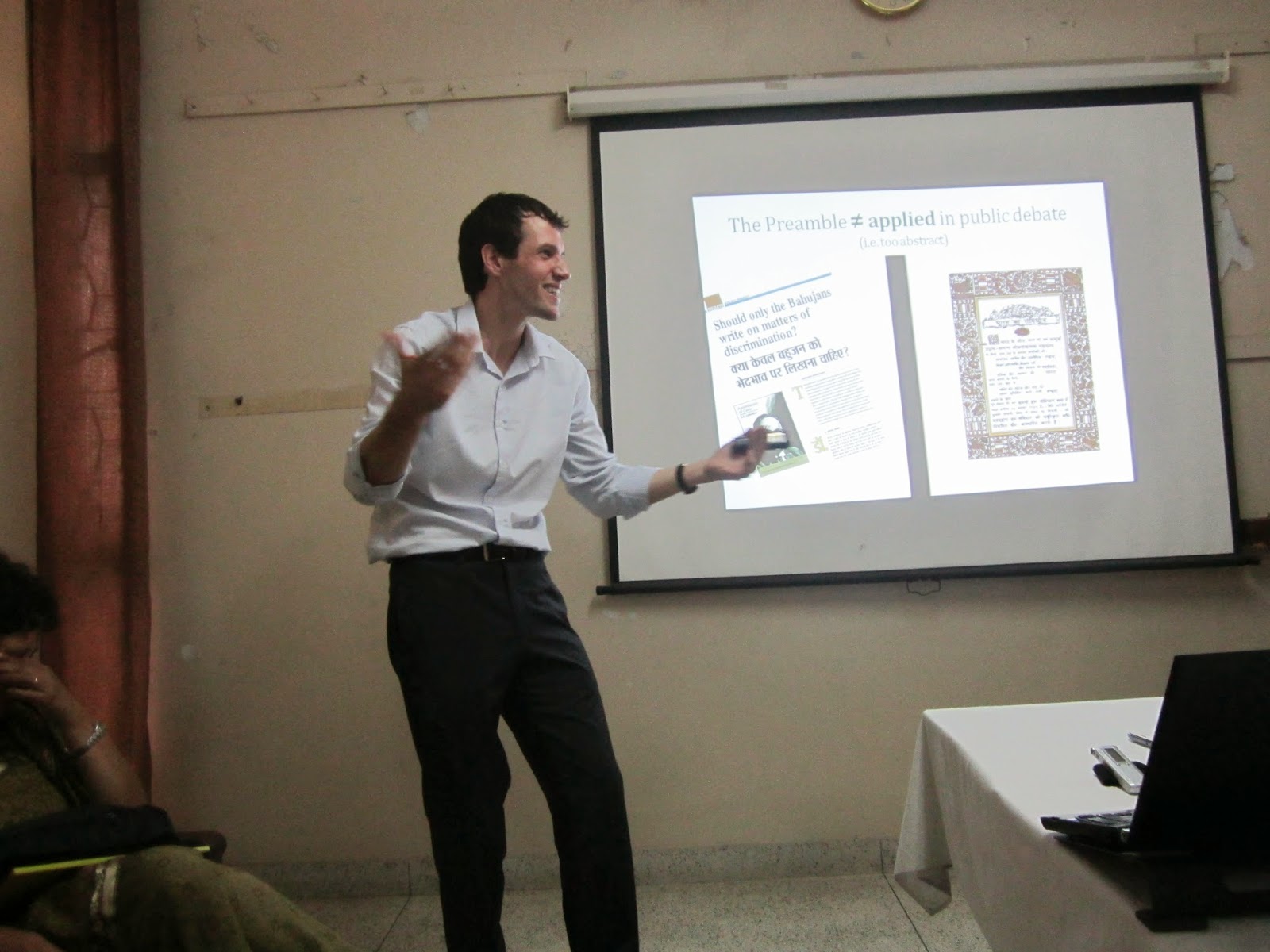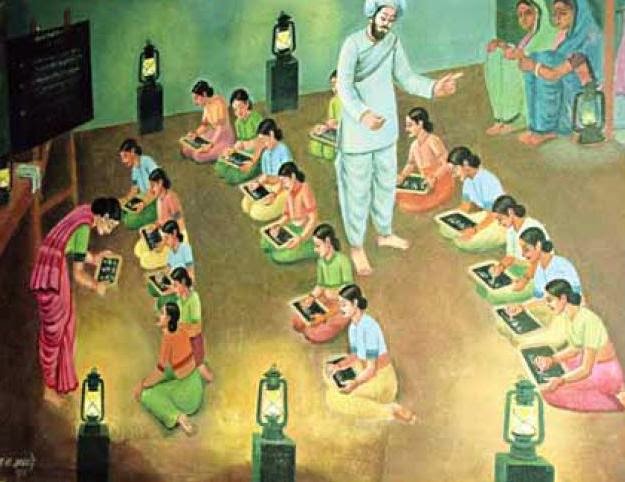Media India
– Majority India: Discussed
and Undiscussed India
India arrived on the world stage in the 21st
century. In the summer of 2006, in a single week India was highlighted internationally
in cover issue editions of the newsweekly Time, the prestigious The
Economist, and the authoritative journal Foreign Affairs. These
three prominent portrayals of dynamic-India engendered Pankaj Mishra’s reminder
of difficult-India in The New York Times.
According to Foreign Affairs, India today is a roaring capitalist success
story and an emergent strategic partner of the U.S. After the Indian economy was
liberalized in the early 1990s India
emerged as a world leader in information technology and business outsourcing. Growing
foreign investment, easy credit, and even international education ventures have
fuelled an urban consumer revolution. Slogan “India Everywhere” dominated the World
Economic Forum in Davos, Switzerland.
Mishra, however, reminds us that not long
ago, India
was largely viewed as a poor, backward, communally violent country. She was
saddled with an inefficient bureaucracy, softly aligned with the former Soviet Union; definitely on the wrong side of history.
Mishra contrasted investment-India with experienced-India.
His New York Times article argued
that the “increasingly common, business-centric view of India
suppresses more facts than it reveals”. In fact, the business-centric view
barely mentions Other India.
But anyone who lives in India clearly understands Mishra’s motivation
for exposing Other India, the barely mentioned India. The business-centric mindset
is too ready to discount Other India. But that is a serious mistake. And it is
the India
that Mishra refuses to not see.
I have become convinced that Westerners
would do well to listen to the insider voices of the Mishras, the Manis, the
Mungekars, and others who invite us to look more closely at Other India. It is
the India that Barbara
Harriss-White, Cambridge University economist, refers to as “India of the 88 percent.”
And look we must. We must look, consider, and
fully factor in what business-centric New India seldom seems to see.
For Other India, majority India, is an India
more than 70 notches below Cuba
and México in human development indices. And this Other India, Majority India’s
gdp, is only slightly higher than
sub-Sahara Africa, just two rungs above Myanmar.
And it is this Other India that is the
largely undiscussed and the too-often-unfactored-in India. It is not the
publicity-India of the media. But it is the persistent-India of the masses.
The questions here are: “Why does persistent-India so tenaciously
endure?” and “Why is India
so little different from what Mahatma Phule 150 years ago called “prison house”
India,
a social construct of a comprehensive and reinforced worldview?” And lastly,
“Why does this “prison house” so painfully and persistently flourish as the India we see every day – the 88 per cent India?”
Point-Counterpoint: Indians Left-To
Themselves and Indians Lifted-From Themselves
Indian intellectuals and leaders, including Phule, Ambedkar and
Gandhi, have been pained and perplexed by the issue of India’s nagging poverty. I call it
the difference between Indians left-to
themselves and Indians lifted-from
themselves.
Indians left-to themselves plod, even pollute. But such a
situation is not fate. It is not the “karma” of India. For there is an alternative
possibility.
Indians lifted-from themselves tend to prosper. Indians lifted-from
themselves rather persistently present a profile of development, even
distinction. It is this alternative possibility that is inadvertently made by Thomas Friedman in The
World is Flat.
Friedman comments on British historian Paul Johnson’s essay in Forbes
about Uganda’s Indian
population, now immigrants in the United Kingdom. In the U.K., there are more millionaires among Ugandan
Indians than in any other recent immigrant community in Britain. Johnson makes the point
that “when left to themselves,” Indians “always prosper as a community.” Obviously,
that is a contradiction to Cambridge University’s professor Harriss-White’s “88 percent India”.
She finds that Indians left to themselves struggle just to exist. Friedman and
Johnson say Indians “left to themselves” prosper.
Actually, Friedman and Johnson precisely make my point: globally successful Indians are extracted Indians,
not embedded Indians. It is Indians lifted-from themselves,
transported into a cultural framework other than traditional India, who tend always to prosper
as a community.
And that is actually what Friedman
and Johnson noted of the Ugandan Indian community in the UK. For the UK
Ugandan Indian population is not an Indian population left-to-themselves. The
UK Ugandan Indian is an Indian lifted-from-himself. And that two times: once,
from India; and again, from Uganda.
The UK Ugandan Indian is a certain
kind of Indian, an Indian lifted-from-himself/herself.
Professor Joel Kotkin, the author of Tribes: How Race, Religion and Identity
Determine Success in the New Global Economy, has described what happens to
the Indian lifted-from Manu India,
Majority India. “Cast apart from the setting of his village and
[caste-determined] clan,” Kotkin writes, “the overseas Indian has begun to
adopt a broader identity that increasingly cuts across traditional [Hindu caste
worldview] sectarian lines.” That special kind of Indian almost forms a “new
caste”, the world India,
“the greater India”.
Exactly. It is that “broader
identity” that makes the difference. And it is these Indians who prosper. They
have been culturally transformed by a worldview extraction. Ugandan Indians were
extracted from the Indian caste system. There, in a foreign land, even though
poor and bonded, they found ways to prosper. And when lifted from the caste
system even further, into the freedoms of England, they prospered even more.
So then, Indians who most often
demonstrate an excellence in the global world are not those who remain embedded
and left in their traditional culture. Instead, they are Indians lifted from
what Phule called a “prison house”. And their prosperity is realized by a
cultural extraction, by some alternative catalytic means. In other words, by
being lifted from themselves.
There are many who see this. Jay
Dubashi of Value Research, for example, says, “Indians are getting rich, but not in India.” That is, Indians are
getting rich, but not if left-to themselves.
Dubashi explains: “It’s the Indian Diaspora that
is minting money hand over fist, all the way from London,
England, to San Diego, California,
and producing millionaires by the dozen.”
And then he asks the nagging and painful
question, “If Indians can make millions in England
and New York, why can’t they do so in Mumbai
or Delhi or
Kolkata? Why don’t we have as many millionaires per square mile as in those
countries?”
The answer lies somewhere in the
history and mindset of embedded India.
Traditional India
as a whole community, is a brahmanic Chaturvarnya world.
Embedded India, India left to itself, is a world that
over long centuries has consistently created a recognizable signature. It is
the signature of Manu.
And according to Pavan K. Varma, author of The Great Indian Middle Class,
“there can be no real assessment of some of the identifiable traits of the
Indian middle class without taking into account the legacy that [Manu] Hinduism
– the religion of the overwhelming majority of the middle class – has
bequeathed and the influence it continues to have.”
It has been a culture of political
despots, economic destitution, social castes, and spiritually dubious sadhus. Varma, for example, in Krishna: The Playful Divine, also addresses the moral and social
consequences on Indian society of Lord Krishna as a model personality.
J. Varenne, Yoga
and the Hindu Tradition; S. M. Dahiwale, Understanding Indian Society:
The Non-Brahmanic Perspective; and Dolf Hartsuiker, Sadhus: India’s
Mystic Holy Men, all examine the cultural person, , the ideal person, the
sadhu. And Prasenjit Chowdhury, Kolkata analyst, asks the hard question:
“Is it a
typical South Asian trait or is there something wrong with the religion we
practise, which gives precedence to purity of the soul and not the environment?
Many of our temple towns, such as Benares and
Ajmer Sharif, where the priestly class calls the shots, are the dirtiest.”
That is a question that refuses to go away, and it is more than just
about the physical environment. For
over the thousands of years available, the Manu world has never generated a
society of political justice, economic dynamism, social equality or spiritual
integrity. Instead, it has only and always signed with a single signature. And the
signature culture that it has persistently produced is a life situation where
those left to themselves inside it, do not prosper.
Historically then, it is the Indians
who have been lifted from themselves who have become transforming catalysts. But that is precisely the point: they have
consistently been extracted Indians.
Their way out has most often been
education, immigration, conversion, or some combination of these transformative
three. This pattern of extraction appears to hold true in a very consistent
pattern.
Think of Indian heroes. They are all
lifted-from-themselves Indians: the Phules, the Ambedkars and the Nehrus; the
Tatas, the Ambanis and the Birlas; and Sun Microsystems’ Vinod Khosla, Pentium
chip creator Vinod Dham and U.S. astronaut
Kalpana Chawla – all of them and so
many like them.
They all have one thing in common. They are all
Indians who have not been left to themselves, embedded inside the caste system.
They are all Indians who have been lifted from themselves.
And their roads out have been along three main
routes: education, immigration, conversion or a highway with multiple lanes
that combines two or three together – education and conversion, education and
immigration, or education, immigration and conversion, etc.
Next month we will look at four different
prescriptions by four different doctors for how India can be lifted-from the Manu
malady – because, while all societies are sick, some are sicker than others. §
(Published in Forward Press, September 2011 Issue)
Forward Press.













